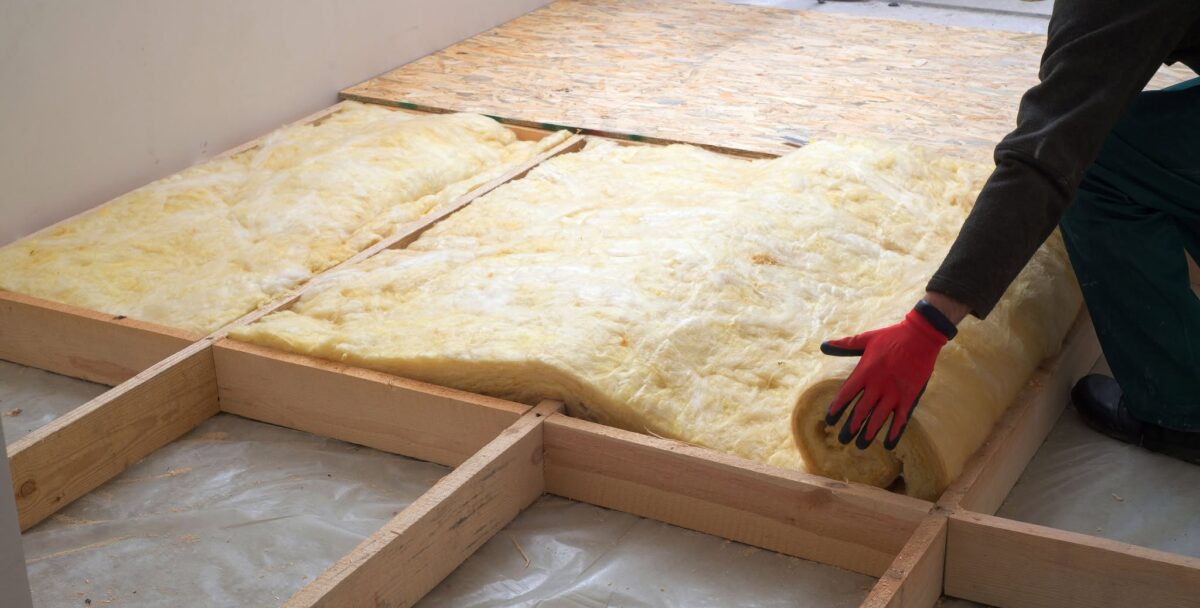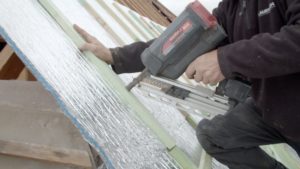Thin Floor Insulation for Concrete Slabs: What You Need to Know

Concrete slabs are a common feature in commercial and industrial buildings, offering strength, durability, and versatility. However, they are notoriously poor at retaining heat, often resulting in energy loss and uncomfortable indoor conditions. Adding insulation is critical to improving thermal efficiency, but for many projects, space constraints demand a solution that doesn’t add bulk. This is where thin floor insulation on concrete comes into play.
Key Benefits of Thin Floor Insulation on Concrete
Concrete is a highly conductive material, which means it readily transfers heat. Uninsulated concrete floors can lead to several issues:
Thin floor insulation provides a solution that minimizes energy loss and enhances comfort without significantly raising the floor height.
Improved Thermal Efficiency
Thin floor insulation acts as a barrier to heat transfer, preventing warm air from escaping through the concrete slab during winter and keeping cool air inside during summer. This not only enhances indoor comfort but also reduces the workload on HVAC systems, leading to energy savings.
Space-Saving Design
Unlike traditional insulation, thin insulation products are designed to provide excellent thermal performance without adding significant bulk. This makes them ideal for retrofitting projects or buildings where maintaining ceiling height is a priority.
Moisture and Vapor Protection
Many thin insulation products, such as reflective vapor barriers, include moisture-resistant properties. These barriers prevent water vapor from seeping through the slab and into the building, reducing the risk of condensation, mold, and flooring damage.
Compatibility with Flooring Systems
Thin floor insulation works well with a variety of flooring types, including tile, laminate, hardwood, and carpet. It provides a smooth, stable surface for flooring installation while enhancing thermal and moisture protection.
Energy Savings and Lower Costs
By reducing heat loss through the slab, thin floor insulation lowers energy consumption, translating to significant cost savings over time.
Top Options for Thin Floor Insulation on Concrete
When choosing thin floor insulation on concrete, it’s essential to consider materials that offer high thermal resistance (R-value) without adding excessive thickness. Here are the most effective options:
Reflective Vapor Barrier Insulation
Reflective insulation, such as Quattro’s reflective vapor barrier, is one of the best choices for thin insulation applications. It combines radiant heat reflection with moisture control, making it ideal for concrete slabs.
How It Works: The reflective layer repels radiant heat while the vapor barrier blocks moisture, preventing condensation.
Best For: Commercial and industrial projects requiring energy efficiency and moisture control.
Thickness: Typically ranges from 3 to 10 millimeters.
Rigid Foam Board Insulation
Rigid foam boards, such as extruded polystyrene (XPS) or polyisocyanurate, provide robust thermal resistance and excellent durability. These boards are a popular choice for high-performance insulation needs.
How It Works: The dense foam acts as a thermal barrier, minimizing heat transfer and resisting moisture infiltration from the concrete slab.
Best For: Heavy-load areas and buildings in colder climates where higher R-values are required.
Thickness: Typically 1 to 2 inches, but thinner versions are available.
Radiant Foam Insulation
Radiant foam insulation combines reflective properties with lightweight foam layers to control heat transfer and provide moderate moisture resistance. This option works well for thinner flooring applications.
How It Works: The foam layers provide a thermal barrier, while the reflective surface reduces radiant heat gain or loss, improving indoor temperature stability.
Best For: Residential or light commercial projects requiring thin, effective insulation.
Thickness: Generally between 5 and 10 millimeters.
How to Choose the Right Thin Insulation for Your Concrete Slab
Selecting the right insulation depends on your project’s specific needs. Here’s what to consider:
Thermal Performance
Evaluate the R-value of the insulation material to ensure it meets your energy efficiency goals. Materials like aerogel and XPS foam offer high R-values in thin profiles.
Moisture Resistance
In areas prone to humidity or condensation, choose insulation with built-in vapor barriers, such as Quattro’s reflective insulation.
Load Requirements
Consider the weight and type of flooring that will be installed over the insulation. Rigid materials like XPS are better suited for heavy loads.
Budget and Space Constraints
For projects with tight budgets or height restrictions, reflective insulation or polyethylene foam may be the best options.
Ease of Installation
Choose insulation that fits seamlessly into your construction or retrofit process. Reflective vapor barriers are lightweight and easy to work with, making them a practical choice for many projects.
Why Choose Quattro’s Reflective Vapor Barrier Insulation
Quattro’s reflective vapor barrier insulation is designed specifically for applications where thin, high-performance insulation is needed. It combines radiant heat reflection with moisture control, offering superior thermal efficiency without adding bulk. Its lightweight design makes it easy to install, and its durable construction ensures long-lasting performance for both commercial and residential applications.
With a thickness of just a few millimeters, Quattro’s insulation provides a space-saving solution that enhances energy efficiency, reduces condensation, and supports a variety of flooring systems.
If you’re ready to explore high-performance thin floor insulation on concrete, contact us today to learn how Quattro’s products can transform your space while keeping energy efficiency and durability in mind.


